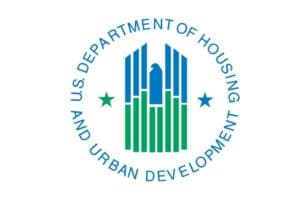Rental Assistance Demonstration (RAD)

HUD Clarifies Milestones for New RAD 1st Component Awardees
The U.S. Department of Housing and Urban Development has begun issuing awards to applicants that were previously on the RAD first component waiting list. In response to questions from new awardees, HUD released several clarifications.

Georgia DCA Seeks Developers for New State RAD Program
The Georgia Department of Community Affairs (DCA), in cooperation with the U.S. Department of Housing and Urban Development (HUD), announced a new Rental Assistance Demonstration (RAD) Multi-Site Bond Program in Georgia. DCA will qualify a small group of developers to work with public housing authorities (PHAs) to redevelop the PHAs’ property/ies with the majority of units as RAD units (at least 80% of total post-redevelopment units).

HUD RAD Hosts Relocation Training for 1st Component Conversions
On March 24, 2015, from 2:00-4:00pm EST, the U.S. Department of Housing and Urban Development Rental Assistance Demonstration (RAD) Team will offer a training on the relocation rules applicable to 1st Component public housing conversions.

Public Housing Symposium Fosters Insightful Dialogue with HUD Officials
NH&RA’s first-ever Public Housing Joint Venture Symposium offered attendees a unique opportunity to gain insight into the progress and updates to key HUD programs. More than 100 developers, syndicators, lenders, and other members of the affordable housing community gathered to voice their concerns and questions to HUD representatives, as well as connect with peer organizations who are working on similar issues.

Administration’s FY 2016 Budget Offers Promising Proposals
On February 2, President Barack Obama introduced his fiscal year (FY) 2016 budget, requesting a total of $49.3 billion for Department of Housing and Urban Development (HUD) programs and proposing significant policy changes aimed at improving the Low-Income Housing Tax Credit (LIHTC) program and a proposal to modify and permanently extend the New Markets Tax Credit (NMTC) program.

UPDATE: HUD Continues Changes to Support RAD Under 2015 Funding Plan
The U.S. Department of Housing and Urban Development (HUD) released a notice in the Federal Register announcing its plan to implement changes made to the Rental Assistance Demonstration (RAD) program in the 2015 HUD Appropriations Act.

UPDATE: HUD Releases Guidance on How Davis-Bacon Applies to Existing Housing
On December 23, 2014, HUD released a Notice detailing and clarifying its enforcement policy with respect to application of Davis-Bacon Wage and the second component of the RAD program.

“Cromnibus” Funding Measure Approved by President, FY 15 HUD Budget Included
U.S. House of Representatives on Tuesday, December 9 introduced the so-called “Cromnibus” spending legislation, a $1 trillion bill that will fund most of the government through September 30, 2015. The measure combines a three-month continuing resolution (CR) for the Department of Homeland Security and 11 full spending bills for the remaining government agencies through the end of fiscal year (FY) 2015.

HUD Issues New Report Detailing RAD Program Progress
HUD has released an initial progress report on the Rental Assistance Demonstration (RAD). This report examines how RAD has transformed the public housing landscape and the new opportunities RAD has created for PHAs to improve the physical and financial condition of public housing as well as how RAD has helped PHAs preserve units over the long term and the program’s impact on residents.